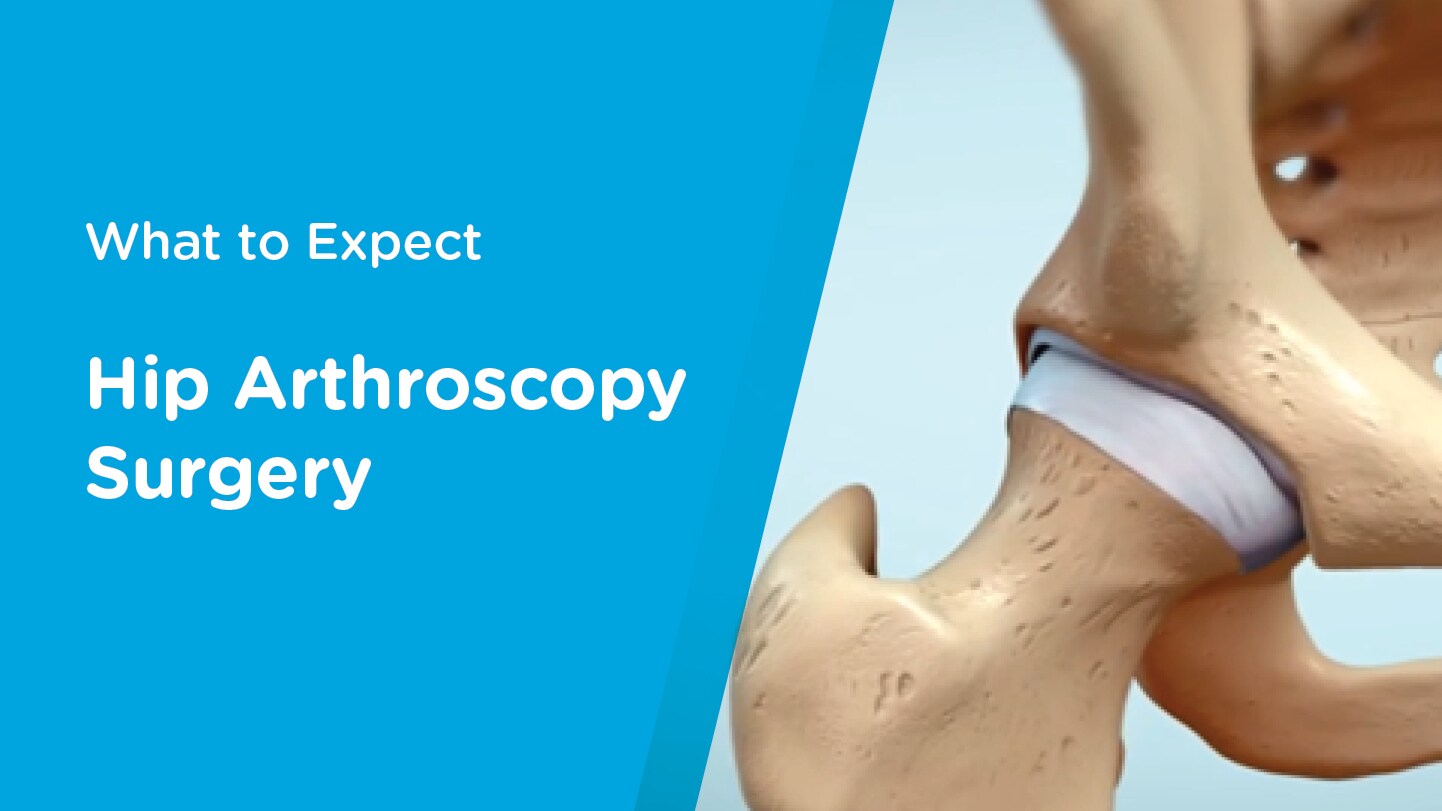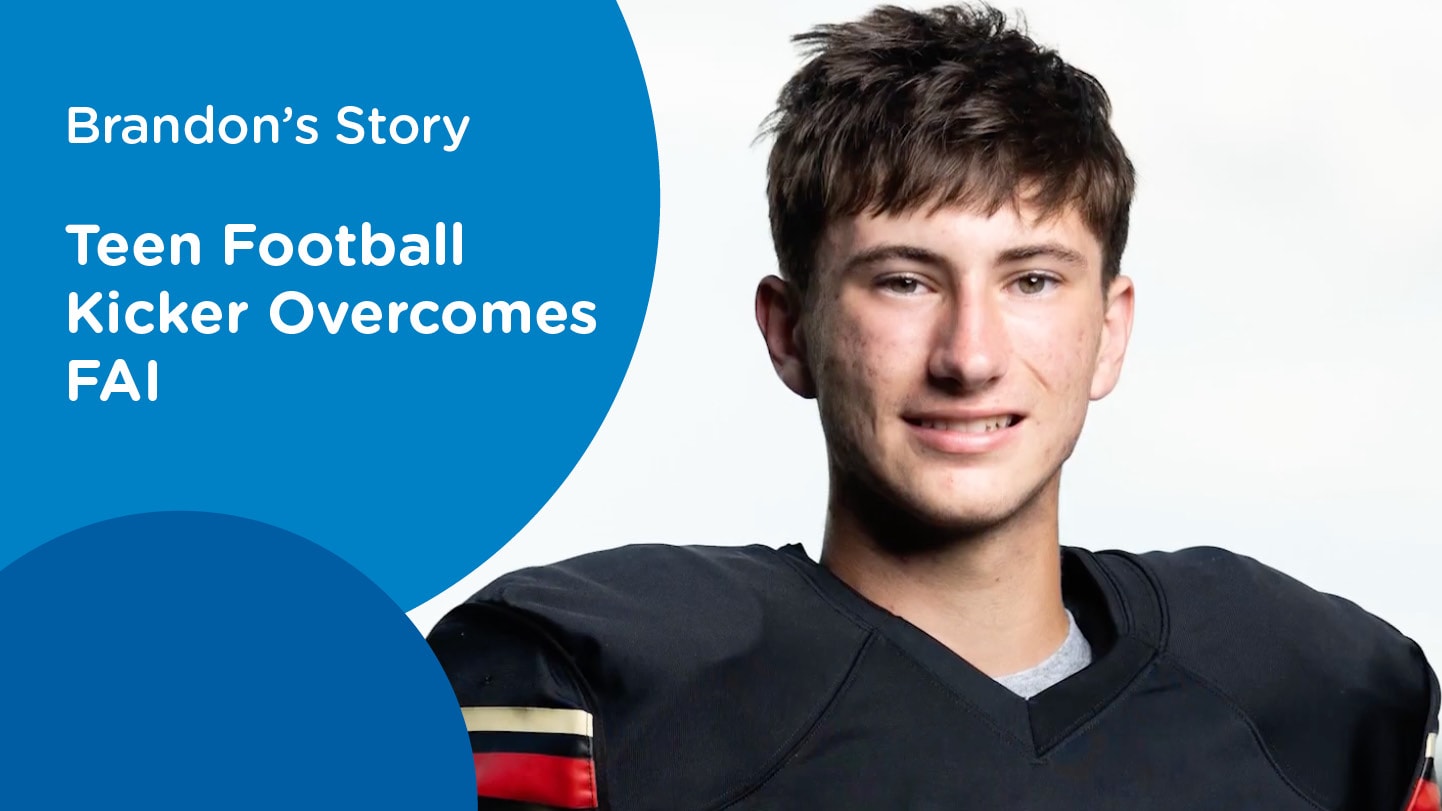Femoroacetabular Impingement
Femoroacetabular impingement (FAI) is when there is too much friction between the top of the thighbone (femoral head) and the outside part of the hip socket (acetabulum). This might damage the hip joint over time. Childhood problems, such as Legg-Calve-Perthes disease and slipped capital femoral epiphysis (SCFE), may lead to a child being diagnosed with FAI.
Some doctors also believe heavy physical activities, like football and weight lifting, before the body stops growing may lead to FAI.
FAI can lead to hip labral tears, cartilage damage and degenerative osteoarthritis. It is a common cause of hip pain in teens; however, it rarely occurs in growing children.
Most patients with this condition have one of three types of FAI:
- Hip impingement cam occurs when the top of the thighbone (femur) is oddly shaped. An abnormal bump on the upper femur can cause uneven contact with the hip socket, possibly damaging the cartilage.
- Hip impingement pincer occurs when the outside part of the hip socket is too deep or goes in the wrong direction. This might cause pinching of the outer part of the cartilage (labrum) with movement.
- Hip impingement combined occurs when there is a combination of excess bone or larger-than-normal ranges of motion.
Signs of FAI can begin during childhood, but it is much more common in young and middle-age adults. Pain and limited hip range of motion are the two most common symptoms. Pain is felt when abnormal contact occurs or when tissues become permanently damaged.
Symptoms of FAI may get worse with age and include:
- Pain in the hip, lower back, groin, thigh or knee (pain rarely goes below the knee)
- Pain during physical activity, such as walking or running
- Pain after sitting for a long time
- Loss of motion in the hip joint
- Labral tears
- Cartilage damage
- Early hip arthritis
- Hyperlaxity (too much movement in the hip)
The pain tends to occur more with the hip in a flexed and internally rotated position (rolled in). Many patients find that rotating their hips outward helps relieve some of the pain. Hip flexion and internal rotation are typically limited.
If FAI is detected and treated early, or before irreversible damage occurs, there is hope that degenerative osteoarthritis (bone weakening) may be delayed or even prevented.
Treatment options include:
- Activity modification
- Medications
- Sports physical therapy and hip strengthening exercises
- Physical activity limitations
- Surgery to improve the hip’s range of motion and prevent further damage or fix current cartilage and labral damage, if possible. Often torn or worn cartilage cannot be repaired. The type of surgery depends on the amount of damage to the cartilage. Three types of surgeries include:
- Arthroscopic surgery (small incisions)
- Surgical dislocation of the femur from the socket so the doctor can trim excess bone and repair necessary areas with suture anchors.
- Reverse periacetabular osteotomy, which involves a series of cuts around the hipbone socket where the femur connects (acetabulum) and a repositioning of the entire socket. This technique is useful in cases in which the femur is rotated backward and trimming the excess bone might lead to instability.
-
What is Hip Arthroscopy Surgery?
Learn how arthroscopic hip surgery is performed by our doctors and how it can help kids and teens with femoroacetabular impingement (FAI) get back to doing what they love.
-
Teen Football Kicker Overcomes FAI After Second Opinion at Children’s
When Brandon was diagnosed with femoroacetabular impingement (FAI), he was told he would have to hang up his football gear—for good. Not ready to give up on his dream of being a collegiate football kicker, Brandon's family turned to Children's to get him back in the game.
Support on Facebook
Contact Us 404-255-1933



